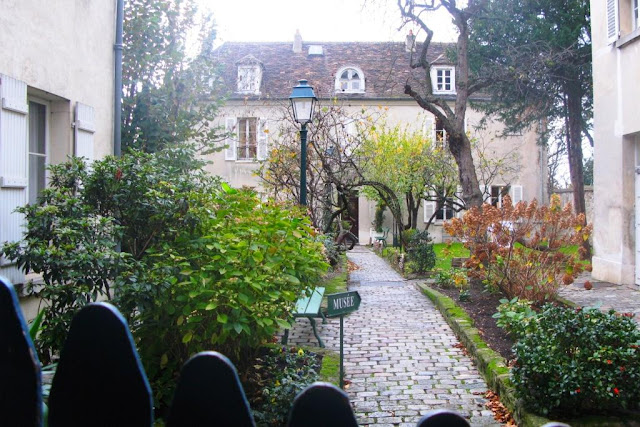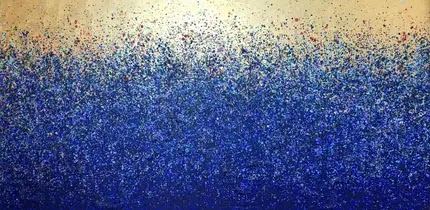I was alerted that there is a threat that the Montmartre Museum could be closed; the City of Paris has indicated that they would withdraw their annual subsidy. This was a good reason to revisit it!
The Museum has been in operation for some 50 years and has its home in the oldest remaining buildings on Montmartre, originally inhabited by “Rosimund”, who succeeded Molière in the Royal troop of comedians. During the 19th century the place was transformed and was occupied by a number of famous artists: Auguste Renoir, Suzanne Valadon, Maurice Utrillo ...
The place was later more or less abandoned, but saved and transformed into a museum.
 The museum is situated close to and overlooks the Montmartre vineyard (see previous post), the St. Vincent park (see previous post), the St. Vincent cemetery (see previous post) and the cabaret “Lapin Agile” (see previous post).
The museum is situated close to and overlooks the Montmartre vineyard (see previous post), the St. Vincent park (see previous post), the St. Vincent cemetery (see previous post) and the cabaret “Lapin Agile” (see previous post).Here you can see what it looks like, outside – including a sculpture (by Charles Delporte) and the last (?) rose of the year ...
... and inside. There are many interesting documents to be seen and of course a number of paintings, gravures... of the different artists who have occupied the place. You can e.g. find Utrillo’s easel and some Valadon and Utrillo paintings, some Toulouse-Lautrec posters...
As mentioned, Auguste Renoir had a studio and painted here e.g. “Dance at Le Moulin de la Galette” (1876), “The Swing” (1876), painted in the garden, “Dance in the City” (1883) and “Dance at Bougival” (1883), the two latter having Suzanne Valadon as model, then 18 years old. She was probably then pregnant as her son, Maurice Utrillo, was born later that year, father unknown (possibly Renoir?). You may see the restaurant where Renoir painted “Dance at Bougival” in one of my previous posts.
Below you can see Suzanne a few years later (1888), “Hangover”, painted by Toulouse-Lautrec and some of her own paintings from the garden, “Nudes” (1919) and “Garden” (1928).

Suzanne made this portrait of her son in 1921, he was then 38. Maurice was very productive and painted several times the nearby cabaret “Lapin Agile”. One painting is of the house where he then lived, now the museum. Maurice Utrillo is buried just downhill, at the St. Vincent cemetery.
In the museum you can find the original of a painting from 1875, by the caricaturist André Gill, representing a rabbit jumping out of a saucepan, made to decorate the wall of this small cabaret and restaurant, which is how it got its name “Le Lapin à Gill” (“Gill’s Rabbit”). With the time the name was transformed to “Lapin Agile” (“Nimble Rabbit”). If you check one of my previous posts, you can read about the number of later famous artists who have performed here and also about all celebrities who have attended. You can see (the copy of) this painting under the leaves.

One of the paintings in the museum is by Adolphe Wilette, “Parce Domine” (1884). It was made to decorate a then famous cabaret “Le Chat Noir”, where “all” artists met those days. Wilette was also in charge of the original decoration of “Moulin Rouge”, including the design of the red mill on top. (If you are interested you can read about the story behind the name “Moulin Rouge" in some of my previous posts, e.g. here, here and here.)
 Another painter who worked here was Raoul Dufy. This painting is obviously one of his last, from 1953.
Another painter who worked here was Raoul Dufy. This painting is obviously one of his last, from 1953. At last I wish to mention Fransique Poulbot, who also worked here, famous for his illustrations of Montmartre children, now known as “poulbots” and widely copied - and falsified. You can also read more about this in a previous post.




































































